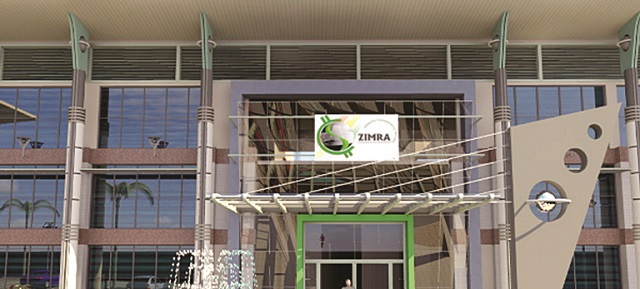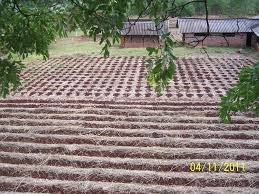Growing ‘more with less’: Zimbabwe’s vision for food security
Across southern Africa, good quality arable land and water are running out. This, combined with climate
change, which could leave another 50 million hungry by 2050, requires wider adoption and intensification of innovative food production – growing more with less.
But it must be sustainable, involving more prudent use of inputs, lower greenhouse gas emissions and growth in natural capital and resilience.
With more than 70 percent of Zimbabweans depending primarily on agriculture for their livelihoods, smallholder farmers are important towards meeting both household and national food security.
But if they are to meet these ambitious targets, improving their access to modern farming information and technologies will be vital.
Indeed, sustainable intensification – achieving bigger and better harvests on small land – should now be the basis for all investments in farming, both big and small.
But this requires more than just inputs and technologies.
To find innovative, sustainable farming strategies that address the challenge of growing more with less and take a broader approach to system intensification (including Conservation Agriculture elements, soil fertility, integrated pest management and diversification), Zimbabwe is partnering with national, regional and international institutions.
Through the sustainable agriculture approach, smallholder farmers in the country are increasing their capacity to adapt to climate variability through the application of sustainable intensification practices.
The government and its partners have been working with farmers to help them apply Conservation Agriculture practices, such as crop residue retention, mulching and minimum soil disturbance to simultaneously boost yields and protect the environment.
Not only are these practices reducing soil degradation and improving soil moisture levels and carbon capture, but they are increasing maize yields.
Many Zimbabweans rely on maize for their staple food called sadza or isitshwala — a thick porridge covered in relish before being eaten.
Maize mono-cropping practices have compounded the problem of soil fertility depletion and food and income insecurity in the country.
In response, the government has encouraged diet and income diversification through cultivation of multiple crops. A first step towards food and nutrition security is a diversified farming system. In addition to maize, and different types of pulses, Zimbabwean farmers have vegetable crops, fruit trees, and livestock on their farms.
The intensification and stabilization of rain-fed maize-cropping systems offer considerable promise for boosting productivity, improving food, feed and nutrition security and helping reverse the continuous decline in soil fertility.
Also, the government has been working with partners to roll out climate-smart technologies, which include Conservation Agriculture, a key component of the successful Pfumvudza/Intwasa program, and other Conservation Agriculture-based intensification options. The cropping systems Zimbabwe promotes can be labelled as climate-resilient, according to the United Nations Intergovernmental Panel on Climate Change.
The International Maize and Wheat Improvement Centre(CIMMYT) has stood out as one of the organizations that has provided support to Zimbabwe’s agricultural research by directly engaging with farmers giving advice such as the need to leave crop residues on the field, reduce tillage and add legume crops in rotation with cereal crops and forages to build soil health and improve yields.
“Working closely with the government and private partners, CIMMYT continues to serve Zimbabwe through the development and scaling of climate-resilient, multi-stress tolerant and nutritious maize varieties; appropriate scale mechanization options and the broader suite of climate-smart agricultural practices for sustainable agrifood systems.” said Mainassara Zaman-Allah, CIMMYT’s country representative.
As a result, drought – tolerant maize varieties resilient to climate change, and better suited to farmers’ conservation practices, have been selected and scaled out by partner seed companies. CIMMYT has also facilitated farmer participation in variety selection.
“The main purpose of including farmers in variety selection trials is to understand what they needed from the varieties,” said James Gethi, CIMMYT seed systems specialist. “We are then able to develop varieties according to the farmers’ preferred criteria,” he continues.
“Since 2016, 95 unique CIMMYT maize hybrids have been licensed to 21 partners for registration and commercialization in Zimbabwe. In 2022, certified seed production of multiple stress-tolerant maize varieties in Zimbabwe reached about 26,000 tonnes, with more than 40 percent having CIMMYT genetics,” Gethi adds.
Smallholder farmers working closely with scientists in field experiments have been able to identify higher yielding and stress tolerant varieties for high and low potential agro-ecological zones. This work has been implemented through Agritex, the government’s agricultural extension arm.
“On all the demonstration plots I planted, I have learnt and gained a lot of experience in growing maize. I have learnt a lot of differences in the seed varieties that offer a good harvest,” said Lydia Dzenga from Zvavamwe Village, in Chegutu district, in Mashonaland West Province.
Another smallholder farmer, Linda Muchando, from Ward 27 in Mutoko district in Mashonaland East Province, said: “I learnt a lot about the different maize varieties received for the trials. I learnt about which variety is resilient to heat, which type of seed works well in the type of soils of my area which will help farmers know which type of varieties to grow in our area.”
Sometimes, the rains in Muchando’s area are too little, too late.
But to reach the ambitious improved agri-food system goal, an accelerated adoption of technologies among farming communities is essential. “There are so many different technologies bombarding farmers.
The real work therefore lies in dealing with the social, cultural and environmental factors that will determine the suitability and subsequent adoption of introduced technologies,” said Zaman-Allah.
Zaman-Allah observed that at the end of the day, farmers are economists and will balance between risks and possible benefits. “We realize farmers prefer to use the varieties they know and have used for many years,” he said.
“However, we have farm-level evidence that the improved varieties grown under sustainable intensification practices contribute to increased yield, decrease drought risks, reduce production costs, and improve soil fertility over time.”
Elphas Chinyanga, a smallholder maize farmer in Shamva district in Mashonaland Central Province, was used to the traditional way of farming that his family had practiced for generations, which required clearing a plot of land and burning all plant residues remaining on the soil to get a clean seedbed. But, as land demand increases, this fuels deforestation and depletes soil nutrients.
CIMMYT has been working with farmers like Chinyanga since 2004 to adapt sustainable intensification practices like Conservation Agriculture to his circumstances.
In the 2018-2019 cropping season, Chinyanga harvested his best maize yield in the last decade, thanks to the good agricultural practices.
A great deal of progress occurred from 2018. The country has attained a “steady flight path” and is on track to deliver significant impacts in food security,” said Obert Jiri, permanent secretary in the Ministry of Lands, Agriculture, Fisheries, Water and Rural Development.
Zimbabwe is now food secure after achieving bumper maize and wheat harvests in the last few cropping seasons. The agriculture sector has grown since 2018, positively responding to deliberate interventions across various crop and livestock value chains.
In the 2020-2021 cropping season, the country achieved 2,7 million tonnes of maize and 375,000 tonnes of wheat in the 2021-2022 cropping season. Zimbabwe has an annual requirement of about 2,25 million tonnes of maize-1,8 million tonnes for human consumption and 450,000 tonnes for livestock.
Looking ahead to the next five years, Jiri said: “We want to add another dimension to our sustainable farming systems, and perhaps a different philosophy, one that will lead to greater success.”
But what might the success look like? “For me,” Jiri continued, “success means to get farmers smiling sustainably-smiling because they are better off. For this to happen, we must design sustainable agriculture strategies with heart and vision.”
The country will focus on bringing Conservation Agriculture to even more farmers. Collaborative work with farmers, non-governmental organizations, universities and agribusiness is expected to improve maize productivity and reduce expected yield risk by the year 2030. – New Ziana












